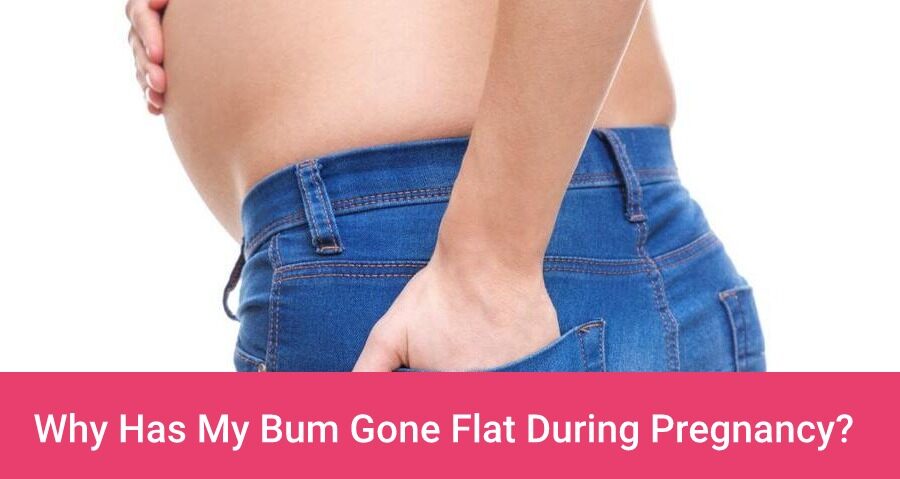
Article By Edna Skopljak – Medical Doctor (MD)
All new moms and moms-to-be all over the world face so many physical and emotional changes. Body changes are one of them. In fact, I think there is not a single mom that hasn’t gone through body changes during pregnancy and postpartum.
I know that it is sometimes hard to accept that your body isn’t the same. You may hate your body weight. And the entire body, actually. You may be concerned about the way you look. You may even be sad and feel weird. On the other side, some moms will simply accept their new body looks. However, you feel – it is entirely okay.
One of the particular changes is the bum getting flat during pregnancy. Be aware that if you are experiencing mom butt syndrome, you are not alone. And it’s ok to be cool even when pregnancy makes your butt flat. This article will answer all your concerns and, I hope, comfort you.
This article is not a substitute for medical advice or consultation
What Is A Mom Butt?
“Mom butt” is the term used to describe flat butt muscles, or in other words, buttocks that have become larger, flatter, flabbier, or saggier during pregnancy, than before expecting a baby. This change is caused by what is medically known as a “posterior pelvic tilt”.
However, mom butt may occur during or after pregnancy. So, there is a chance your gluteal muscles will feel deflated and that your abdominal muscles, as well as the thigh muscles, will feel softer and weaker. If you had a bigger butt, don’t be surprised to see flatter, “mommy” buttocks when expecting, or after childbirth1.
Although you may feel bad about your body when you look at yourself in the mirror (especially when your hormones don’t work for you), be gentle and loving toward yourself. Day by day, you will regain your body gradually.
Does Pregnancy Give You A Flat Bum?
Actually, yes, pregnancy can give you flat bum. You now wonder how?
When you are expecting a baby, your body’s center of gravity shifts due to the growing belly – and a growing baby.
So in order to counterbalance this shift, many moms-to-be tuck their glute muscles under. That, in turn, leads to the back of the pelvic floor overuse. Furthermore, the hip flexors may then become overactive, which worsens the anterior pelvic tilt. In other words, glute muscles shift forwards even more.
However, a flat butt may happen (or continue) when you carry your baby around for a longer time and maintain incorrect posture to help support the weight of your little one. As this also puts pressure on the pelvis, you can get back pain, incontinence, and pelvic floor dysfunction – if you don’t timely address the issue in.
Of course, this is not the reason not to hold your most loved little one. There are ways to help your weak muscles. Plus, there are also other factors that contribute to mom butt. Make sure you read the rest of the article as I dig deeper into this problem.
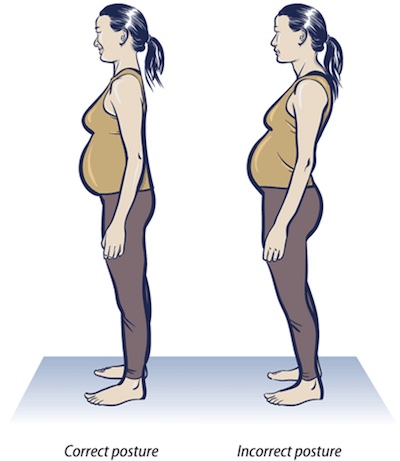
How Common Is Flat Butt After Pregnancy?
Body changes in these expecting months are inevitable. The only question is – how much your body changes and in what ways. A flat butt after pregnancy is pretty common. However, it depends on several factors, including your body weight, body type, and fitness level.
Although one may think that booty gain is more often during pregnancy, many of us women may experience exactly the opposite – butt muscles get flatten. You are not an isolated case, don’t worry.
What Causes Flat Bum Syndrome During Pregnancy?
Once you notice in the mirror, that your bum is somehow flatter than before pregnancy, or you feel like the pants are suddenly so loose in behind, you will probably ask yourself: “Why has my bum gone flat after pregnancy?”.
There are, actually, several reasons for that2:
1. Posture
Primarily, it is due to posture and postural adjustments as the pregnancy progresses, as explained before. Your unborn baby adds weight to the front of the body. Therefore, your body adapts to this load. How? Your body tilts the pelvis and spine forward to assist the postural balance.
As a consequence of these changes in posture, you may experience tight hip flexors and underactive gluteal muscles. When the muscles are not active, they become weaker, and the muscle mass reduces – leading to a flat bum.
2. Hormones
Hormonal changes may also affect your buttocks during pregnancy. During these nine months, your body releases more of the relaxin hormone.
This hormone is actually responsible to prepare you to accommodate the growing baby and for giving birth – by relaxing the muscles, tendons, and ligaments around your pelvis.
However, relaxin also causes the widening and stretching of the muscles in this area, which, in turn, may change the shape of your butt.
Furthermore, when you are pregnant, your levels of estrogen increase. Estrogen is the hormone that plays a role in where we store fat, or where we are losing fat. So, it may contribute to the shape of your glutes.
3. Low Activity
Another cause lies in the low activity. When you are pregnant, you probably enjoy doing… nothing (especially in the third trimester).
You probably spend long periods of time sitting or lounging. More sitting, however, means fewer muscle workouts for your glutes, as well as the abdominal and back muscles. Inadequate muscle activity may cause muscle loss and – flattening of your glutes.
So, when expecting, try to stay active. Not only for your butty, but also for yours and yourvbaby’s health. Of course, this doesn’t apply if your doctor suggests you to rest. There will be more time to recover your appearance after childbirth.
If you want to know how to strengthen your buttocks again after childbirth – read the rest of the article.
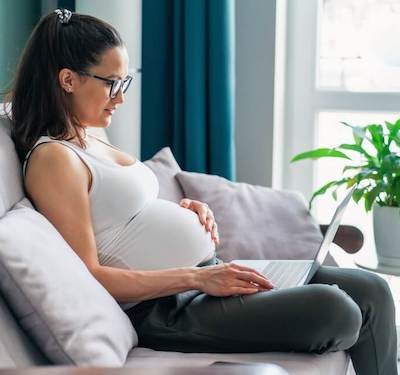
How To Get My Bum Back After Pregnancy
We now know what causes the so-called flat bum syndrome. If you’ve already there – don’t worry, you still have the opportunity to get your glutes back as before you were pregnant and giving birth to your precious one.
You can regain its shape, too, in small steps – don’t expect drastic overnight changes.
You need to start with the exercise plan and prepare for switching to adequate nutrition (if you are still not there) to recover muscle strength and build strong glutes.
Here are some exercises listed3, to build muscle and to workout, strengthening your butt muscles, and – at the same time enjoying the postpartum.
Of course be or you start any of these exercises, make sure to insult with your doctor or OB-GYN if your postpartum body is ready!
1. Walking And Standing Up
Let’s start with some basic steps. First of all, minimize the amount of time you spend sitting. Standing up and walking are essential for maintaining a healthy backside. There is a saying “use it, or lose it”, and in this case, it is definitely true. If you don’t walk enough, your buttocks will eventually reduce in size and lose their function.
Walking is one of the best exercises for flat booty – and especially hill walking. Hillwalking kicks up glute activation and also has benefits for your cardiovascular system.
You may share this activity with your little one. Put your little one in a hiking stroller with a good suspension and hand breaks, and go or a walk (don’t forget to add some incline) together.
Once your doctor allows you to get back to normal workout routine, you may also want to get the best jogging stroller that is specifically designed for this activity and start running with your baby.
If you have the possibility to exercise and walk alone, to move freely, fantastic!
2. Squatting
Squats and wall sit squats are excellent workouts for your glutes and building muscles in the backside. Squatting is a great exercise, but it is also a movement you will repeat all over when you bend down to pick up your baby.
The good part is that squatting can (and should) be done during pregnancy and postpartum. You can modify the range of motion but aim for as deep as possible squatting with the tailbone un-tucking and having your pelvis in the neutral position.
Stand with feet shoulder width apart, with your toes slightly out. Have your knees bent as you will sit in a chair. Press through your heels and stand up again. Have 3 sets of 15 repetitions.
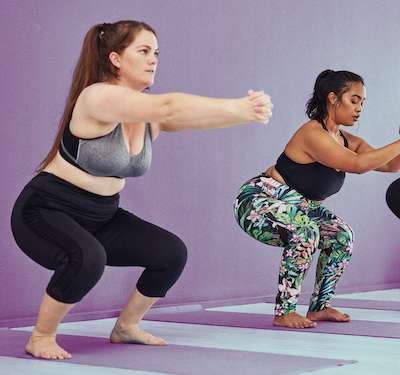
3. Glute Bridge
One of the best glute exercises is the glute bridge. This exercise is great if you want to activate the glutes and strengthen your pelvic floor muscles. Perform this exercise when it’s safe to lie on your back, as the glute bridge will encourage the glutes to connect.
This exercise can be practiced during pregnancy and as early as the 2nd week postpartum. As your strength increases, you may add some resistance with a sandbag on your pelvis.
To start, lie on your back, bend your knee and with your feet shoulder-width apart. Then, squeeze your butt as hard as you can to straighten your hips and lift it up. Hold this position for 3 seconds and slowly lower your butt back to the ground. Repeat it 8-12 times in 3 sets.
4. Leg Extension
The leg extension is a great exercise for your glutes all the way up to childbirth – and is also fantastic in postpartum4. All you need is to simply use your body weight. Otherwise, you can tie some resistance band for extra weight around your ankle.
To start this exercise, begin it on all fours, hands under shoulders, knees under hips, with back straight. Activate your core and pelvic floor muscles to increase stability.
Then, extend one leg straight out behind you, lifting no higher than your back. Make sure the leg is in the right position. Then, return the leg to the floor, and repeat the exercise with another leg. You should aim for 3 sets of 15 reps on each leg. You can also alternate arms and legs during these glute exercises.
5. Hip Thrust
The hip thrust is probably the best strength training for the booty muscles. You will need a bench or a couch for such exercises. Sit in front of a bench or at the edge of your couch with your knees bent while the feet are flat on the floor, shoulder-width apart.
Keep your core tight, and squeeze your glute muscles to extend your hips. Your upper back will flatten on the bench. Make a pause at the top, and then slowly lower back down to the ground.
Make sure you choose a surface that allows you to achieve a 90-degree knee bend when your hips are extended at the top of the movement.
Other Tips For Getting Rid Of Flat Bum After Pregnancy
Besides these exercises, there are other ways to help you gradually regain your pre-preggo booty.
Diet
First, make sure you have a balanced diet5, providing adequate nutrition and calories to feed your muscles, especially if you’re breastfeeding.
Include whole grains, fruits, vegetables, nuts and seeds, low-fat dairy, lean protein, eggs, and high-fiber foods into your diet. Avoid simple sugars (liquid and solid), solid fats, whole milk, alcohol, highly processed foods, and refined carbs. This diet will also help you lose weight.
Be Active
Remember to stay active. The least you can do is walking – and that is, sometimes more than enough. Plus, it will help you lose fat and aid your postpartum weight loss.
Chose exercises that suit you best. However, you will probably want to skip cycling, as it may do the opposite for your glutes.
There are many more exercises, as well, like deadlifts, fire hydrants, elevated clamshells, etc. Rebuilding your glutes can take some time and patience – but it is definitely possible!
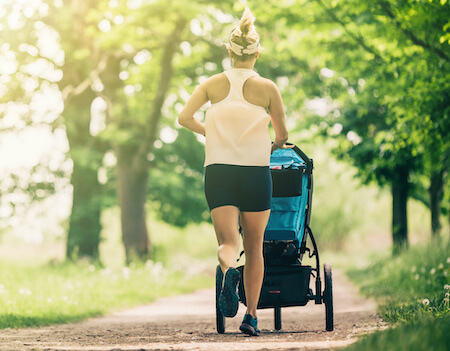
Maintain The Right Ergonomic Posture
Most importantly, change your posture. Try to improve your posture, as improving it (especially when carrying your little one) can help start changing the muscle strength and size of your buttocks.
Start with taking a look at your side profile in a mirror6, especially when you hold your baby in your arms. You will notice what is wrong. Strength training and glute exercises may also help you with that!
There is one more thing that may help – get a good baby carrier that ensures baby’s weight is evenly distributed across your body, without straining your pelvis or hips.
Check out these baby carriers for moms with back pain, as they provide extra support for your lower back and help to maintain good posture when you carry your child.
Bottom Line
No matter what, remember that you are (and you will be) perfect in your baby’s eyes. Maintaining your looks and appearance may be difficult sometimes. However, you may always seek the support of a healthcare professional, or a fitness expert, to achieve the best results. You are surely not alone!
Article By Edna Skopljak
Edna Skopljak is Medical Doctor (MD) who works in University Medical Centre in Ljubljana. She’s a She also worked as an editor at BJBMS medical journal for several years. She wrote content for several health-related websites and the BJBMS blog. She’s a mom of a 15-month-old.
The purpose of this article is informative. It’s not a substitute for professional medical advice or medical care. Remember: safety first! Consult your doctor/pediatrician in case of any doubts. The author of this article does not accept any responsibility for any liability, loss or risk, personal or otherwise, incurred as a consequence, directly or indirectly, from any information or advice contained here.
Resources:
https://www.healthline.com/
https://postpartumtrainer.com/
https://thevagwhisperer.com/
https://jennadalton.com/
https://www.surreyosteopathiccare.co.uk/
https://mumsafe.com.au/
https://www.mother.ly/

